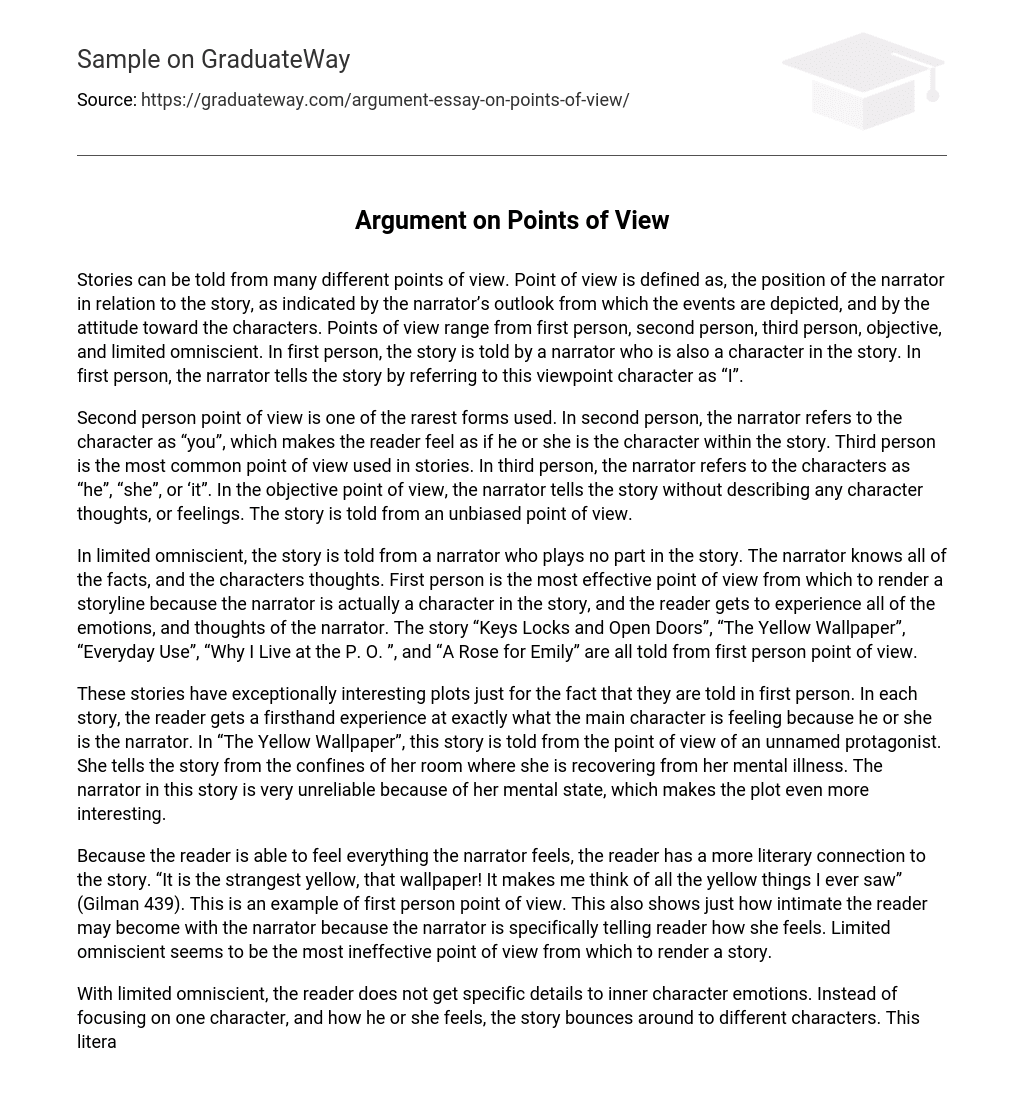Storytelling encompasses a variety of perspectives or points of view used to narrate a story. These viewpoints reveal the narrator’s stance and attitude towards the characters. The different points of view encompass first person, second person, third person, objective, and limited omniscient. First person point of view entails a narrator who is a character in the story and refers to themselves as “I”.
The use of second person point of view is uncommon in storytelling. It involves the narrator directly addressing the character as “you”, which establishes a connection with the reader. In contrast, third person point of view is the most frequently used narrative style, where characters are referred to as “he”, “she”, or “it”. Objective point of view presents the story without conveying character thoughts or emotions, offering an impartial standpoint.
The limited omniscient point of view involves an external narrator who has no role in the story, but is aware of all the facts and characters’ thoughts. In contrast, first person point of view is the most effective perspective for storytelling since the narrator is a character within the story, enabling readers to experience their emotions and thoughts. “Keys Locks and Open Doors”, “The Yellow Wallpaper”, “Everyday Use”, “Why I Live at the P. O.”, and “A Rose for Emily” are examples of stories that employ a first person perspective.
These stories have intriguing plots because they are narrated in first person, giving readers a firsthand experience of the main character’s emotions. One example is “The Yellow Wallpaper,” where an unnamed protagonist tells the story from her room while recovering from mental illness. The narrator’s unreliability adds an extra layer of interest to the plot.
By allowing the reader to experience the emotions of the narrator, a stronger literary connection is forged. As the narrator describes the wallpaper, saying “It is the strangest yellow, that wallpaper! It makes me think of all the yellow things I ever saw” (Gilman 439), a first person point of view is evident. This intimate sharing of feelings by the narrator further enhances the reader’s connection. The limited omniscient perspective, on the other hand, appears to be the least effective viewpoint for presenting a story.
The limited omniscient point of view in “A Good Man is Hard to Find” does not provide specific details of inner character emotions. Rather than focusing on one character, the story shifts between different characters. This literary technique is not as effective as first person in capturing the readers’ interest. While the grandmother appears to be the central character, the thoughts of every other character are also presented in the story. The narrator explains a conversation the grandmother had within the story, expressing point of view in limited omniscient. First person is the most effective point of view for storytelling because it offers a firsthand account of character emotions and features an identified narrator, which increases readers’ interest.
The first person typically employs pronouns like “I” or “we”. Limited omniscient, on the other hand, leaves the reader’s mind wandering. While some readers may appreciate this curiosity, most prefer a more straightforward approach. In limited omniscient, there is no specific narrator identified. Instead, someone speaks on behalf of all the characters in the story. Limited omniscient is also less commonly used compared to first person. This may push some readers out of their comfort zone as most stories are told from a first person perspective rather than limited omniscient.





